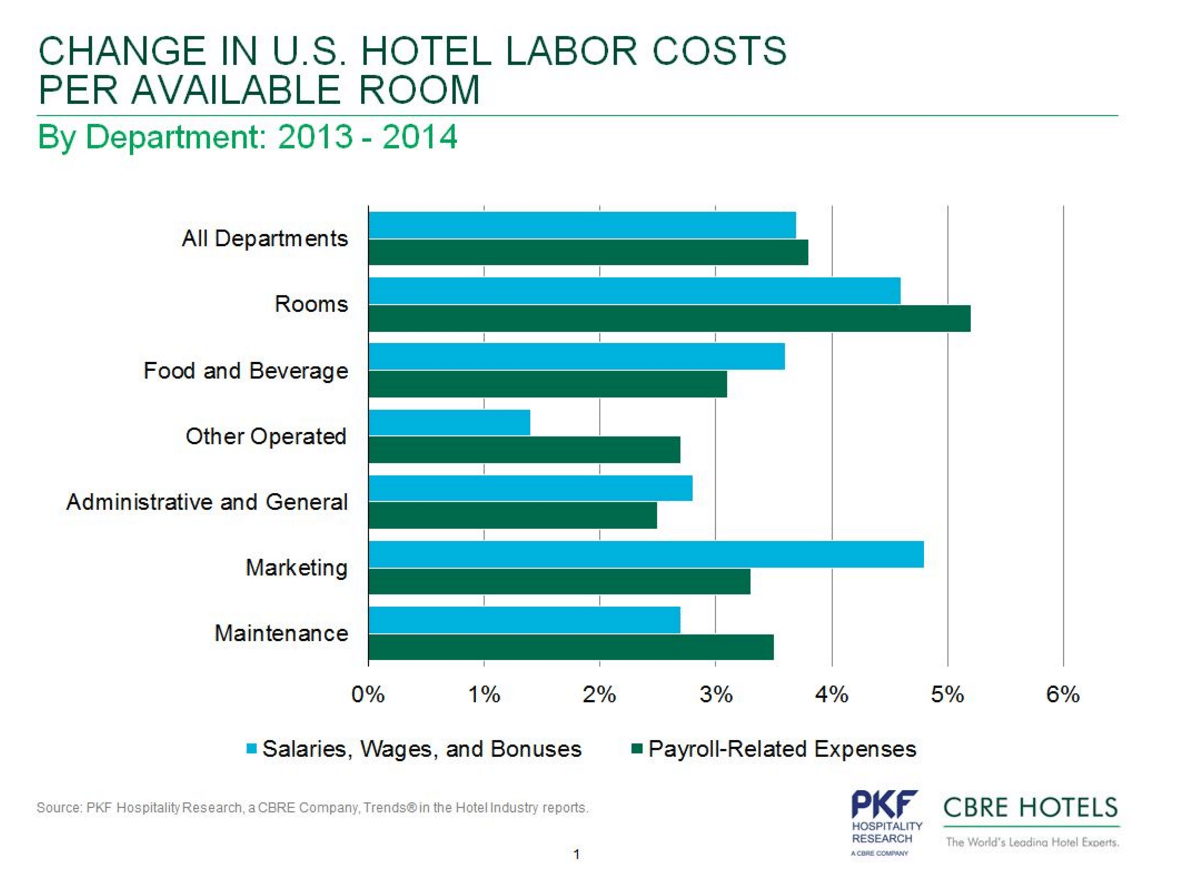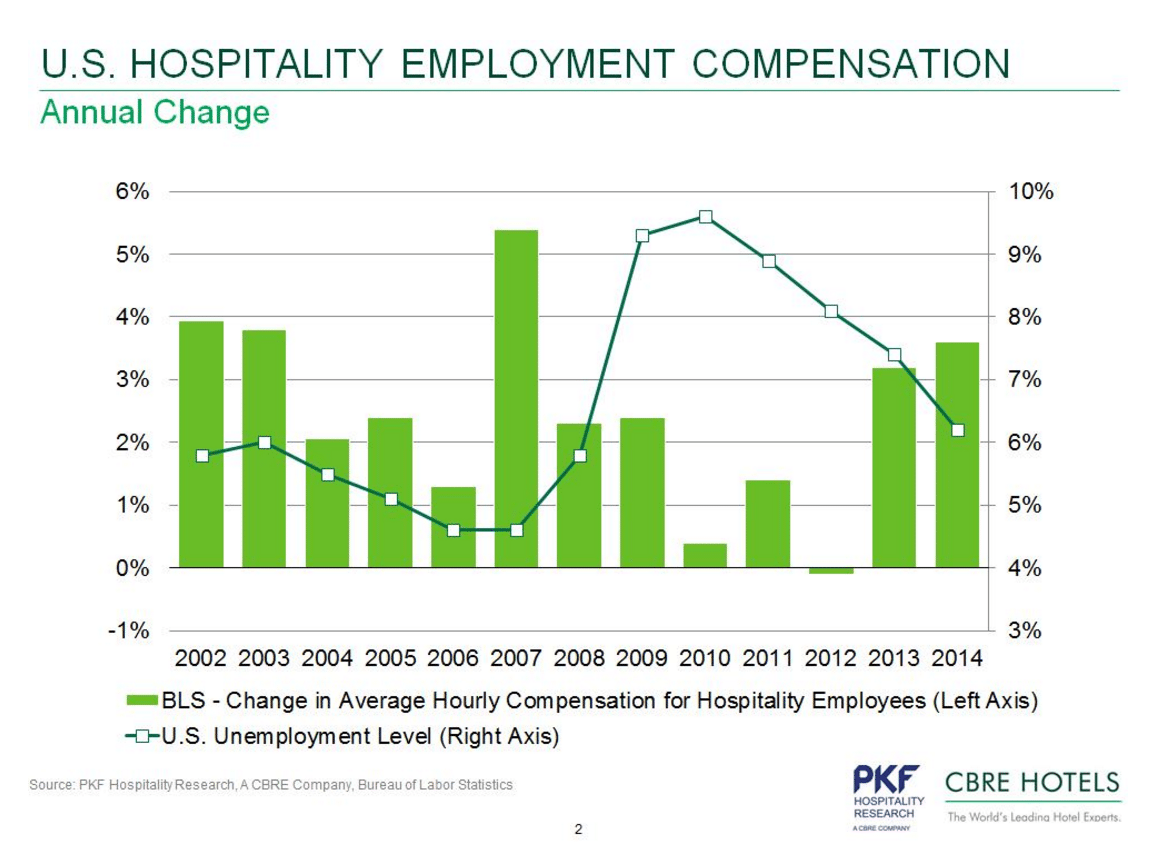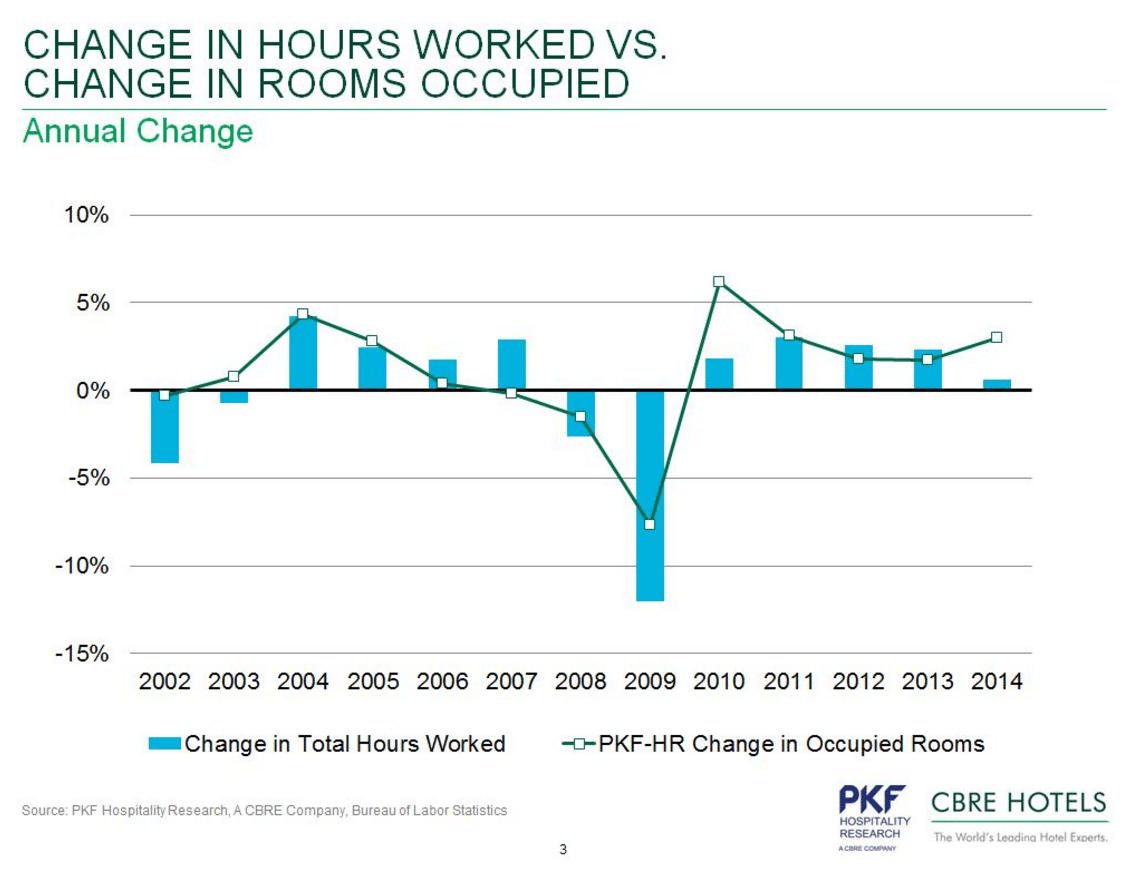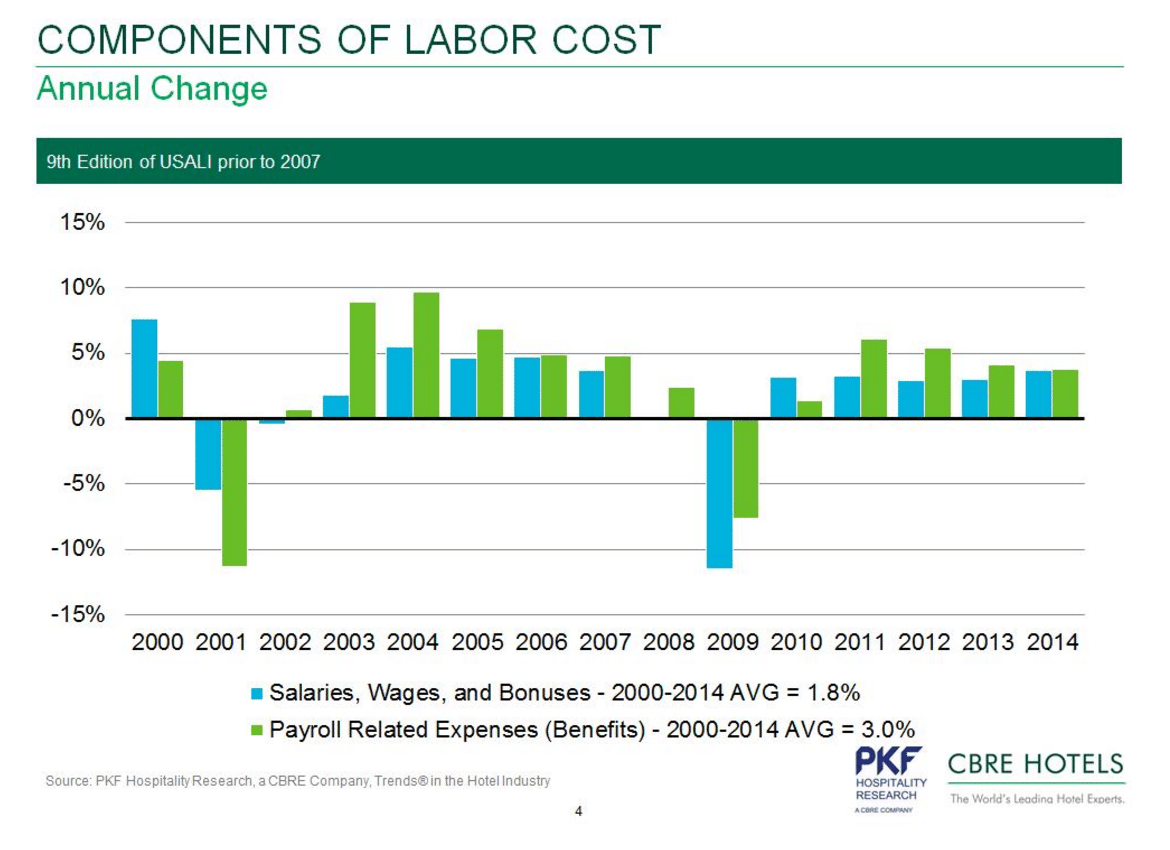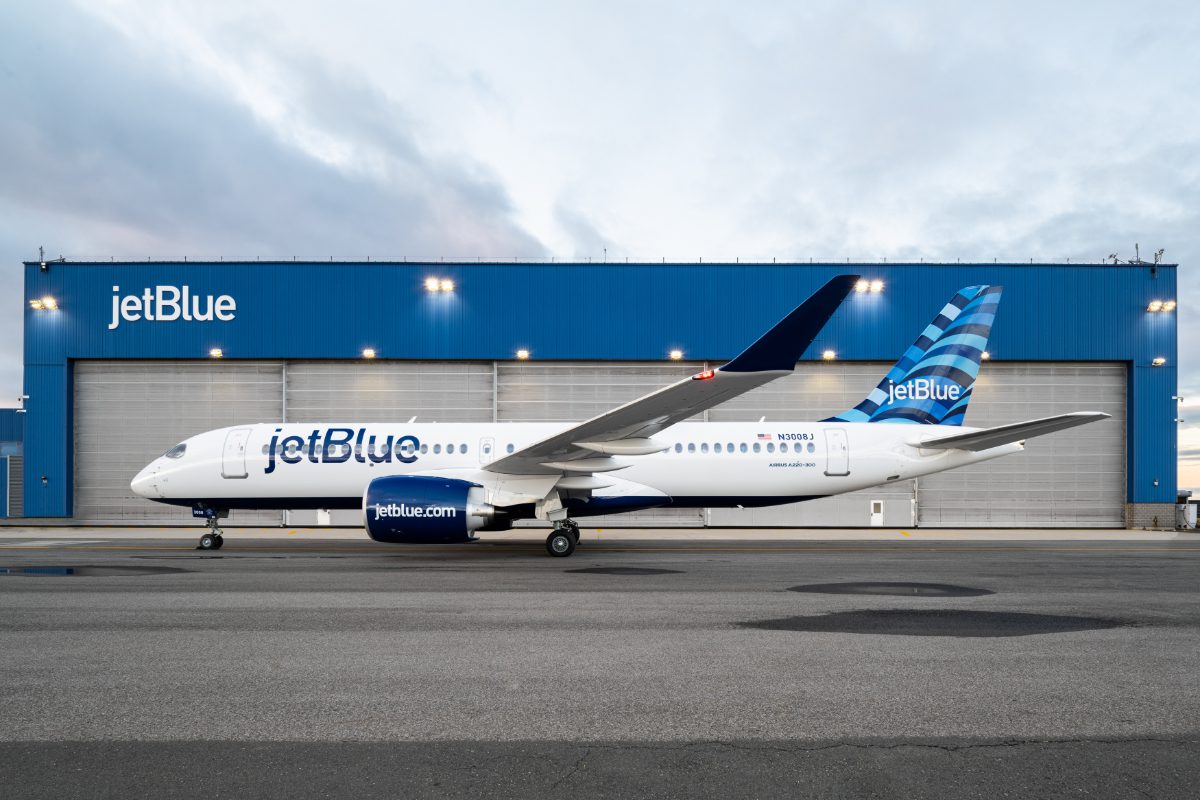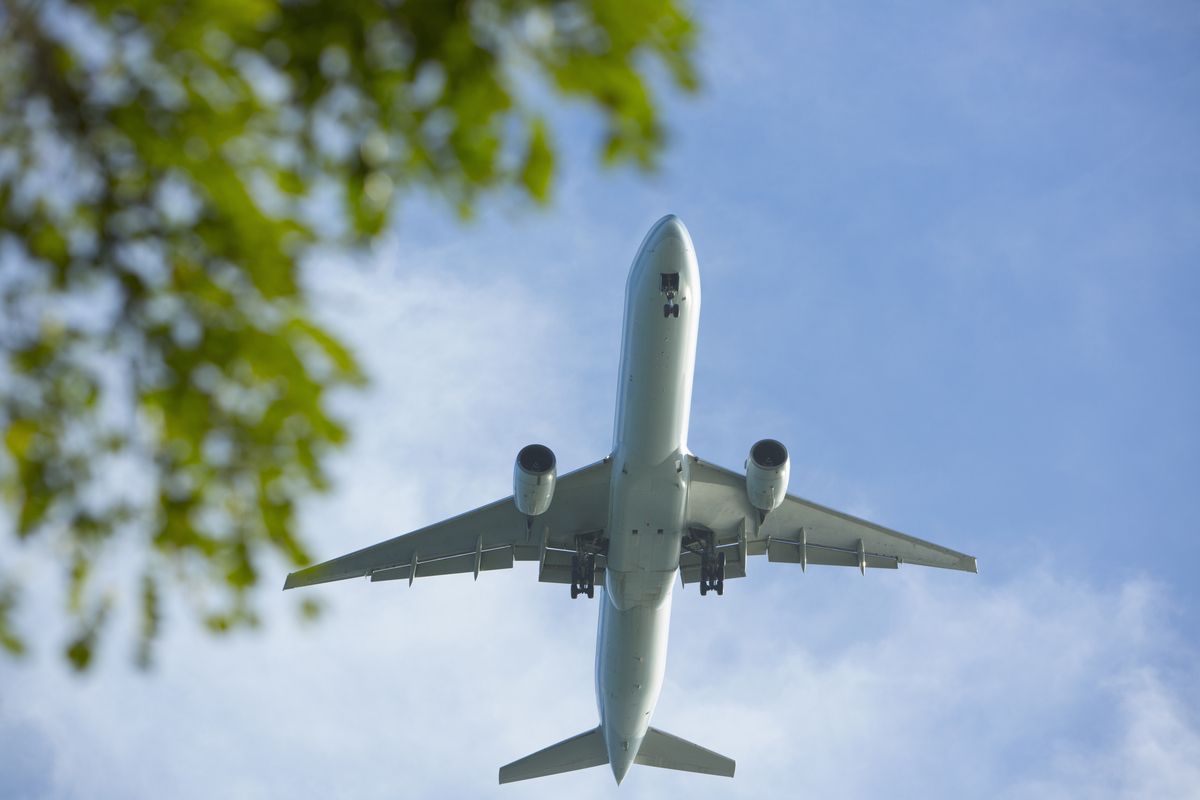4 Charts Showing Increases in U.S. Hotel Workers' Salaries and Wages
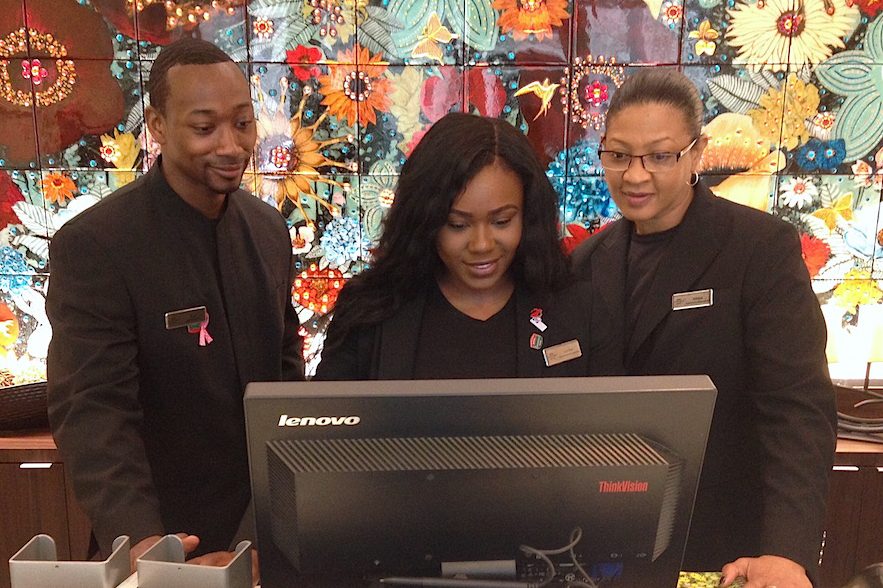
Skift Take
Overall U.S. unemployment is down from the height of the recession in 2009-2010 and salaries and wages continue to trend upwards but this doesn't spell the end of hoteliers' balance sheet challenges.
As the recession waned during the past three years hoteliers have faced the pressure of rising taxes and increases in mandated employee benefits. Starting in 2014, PKF Hospitality Research and CRBE contend that hotel operators will need to focus on the salaries, wages, and bonuses component of labor costs more aggressively than in the past. Low levels of unemployment, combined with the increasing incidence of minimum and living wage legislation, will continue to put upward pressure on the salaries and wages hotels will have to pay their staff.
In 2014 labor costs have averaged 31.5 percent of total revenue, and 44.2 percent of total expenses. To offset the increasing pressures on salaries and wages, hotel managers responded by controlling staffing levels.
PKF estimates that the total hours worked by hotel employees at hotels part of PKF's analysis grew by a mere 0.6 percent. Considering that the number of occupied rooms part of PKF's analysis increased by three percent, it's clear hotelier's were able to achieve significant increases in employee productivity during the year.
The following charts illustrate which departments have seen the most increases in labor costs and help with formulating an outlook on the future for hotel employees that's positive for paychecks but more arduous for hoteliers.
Chart 1: In 2014, the greatest increases in labor costs were observed in the Rooms and Sales and Marketing departments. Rooms department labor consists of room attendants, front desk clerks, bell staff and laundry workers whose schedules are significantly influenced by the volume of business at the hotel.
Chart 2: Last year, the external factor that had the greatest influence on labor costs was the continuing decline in the national unemployment rate. According to the Bureau of Labor Statistics, the national unemployment rate dropped to 6.2 percent in 2014. This contributed to the 0.4 year-over-year increase in the average hourly compensation rate for workers in the U.S. hospitality industry.
Chart 3: In 2014, PKF estimates that the total hours worked by hotel employees grew by only 0.6 percent.
Chart 4: The salary, wage and bonuses component of labor costs increased only about 01. percent from 2013 to 2014, while the payroll related expenses component continued to follow the downward trend observed since 2011.
Source: PKF Hospitality Research/CBRE
